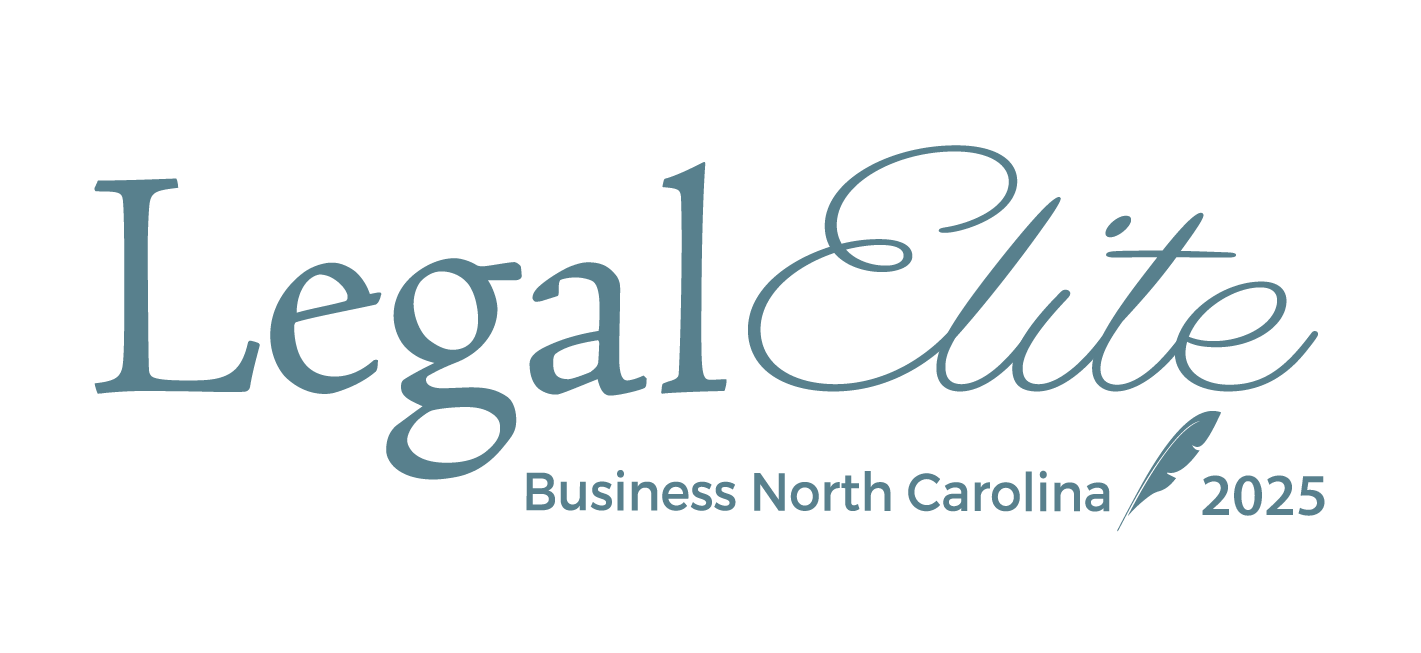The North Carolina General Assembly entered the 2025 Long Session in January, motivated to enact additional Hurricane Helene relief and a new state budget.
Lawmakers successfully enacted two substantial Helene relief packages for Western North Carolina, the first in March and the second in June. However, the session’s defining theme was the growing divide between House and Senate Republicans over tax policy, a dispute that affected bill movement, session length, and the budget itself.
The Long Session also ushered in new leadership, as Governor Stein entered his first year of office and learned to wield his veto pen. In the House, Representative Destin Hall was elevated to the role of House Speaker and Representative John Bell replaced him as Chairman of the Rules Committee. In the Senate, Senator Mike Lee was elected by his caucus to serve as the chamber's Majority Leader after Senator Paul Newton resigned to serve as Vice Chancellor and General Counsel for UNC Chapel Hill, and Senator Sidney Batch was elected Minority Leader by the Senate Democratic Caucus. While the 2025 Long Session produced less enacted legislation than most Long Sessions in recent history, there are still plenty of developments to discuss.
Budget Breakdown
Budget negotiations dominated much of the session, with Republicans in the two chambers proposing similar spending levels but clashing over revenue sources and tax policy. The House and Senate both proposed a two-year spending plan featuring approximately $32.6 billion for fiscal year 2025–26 and $33.2 billion for 2026–27.
The Senate began the budget process this year, introducing and passing its proposed budget in April with Senate Bill 257. Senate Republicans proposed an acceleration of income tax cuts. Under their plan, the personal income tax rate would fall from the current 4.25% to 3.99% in 2026 and continue declining to 3.49% in 2027 and 2.99% in 2028. Their long-term vision includes pushing the rate down to 1.99% if future revenues allow.
Citing declining revenue projected for the upcoming fiscal years, House Republicans were less eager to accelerate tax cuts. While agreeing to the 3.99% cut in 2026, the House budget would raise the revenue thresholds needed for any further rate reductions, effectively pausing those cuts unless the state sees significant fiscal overperformance. Their proposal also included targeted tax relief measures such as exempting up to $5,000 in tipped income, reintroducing a back-to-school sales tax holiday, and raising the standard deduction.
Although the House budget passed in May with notable bipartisan support, Senate Republicans were unwilling to accept the House's recommendations on tax policy. The budget is now in the conference process, but a compromise and a conference report remain elusive. In the last few days of June, both the Senate and the House passed their own "mini-budgets" instead of a comprehensive budget, but there was no agreement on the mini-budgets between the chambers, and they left without any agreement, temporarily leaving state government funded at 2024-2025 levels in the absence of an updated budget.
During a Special Session in July, the General Assembly quickly introduced and passed a $2.3 billion stop‑gap mini‑budget, House Bill 125, which Governor Stein signed into law on August 6, 2025. Any state government functions not specifically addressed in the mini-budget remain funded at 2024-2025 levels. Highlights of the mini-budget include:
- $600 million for Medicaid rebasing;
- $823 million for ongoing state government construction projects;
- $1.2 million to hire 40 driver’s license examiners in the first year of the budget and $2.99 million to hire another 21 driver’s license examiners in the second budget year;
- $13.3 million in the first year and $2.7 million in the second year to open and staff four new DMV offices;
- $142 million for statewide agricultural disaster crop loss;
- $6 million annually to a new division within the Department of the State Auditor called the Division of Accountability, Value, and Efficiency;
- Authorization of step salary increases for teachers, principals, and state employees who are eligible; and
- Funding for enrollment growth at K-12 schools, community colleges, and universities.
Enacted Legislation
Nearly 1,800 bills were introduced during this legislative session, but only a fraction have become law at the time of this writing. The majority of those bills were enacted in the final days of the session, as the first four months of the session produced only a handful of new laws. The General Assembly passed a total of 89 bills into law this year, with 77 bills passed during the Long Session and 12 enacted in the July Special Session. Only four of those 77 were passed by the month of May, the fourth full month of the session.
Additionally, Governor Stein issued a series of high-profile vetoes throughout and after the Long Session, seeking to halt legislation that clashed with his administration’s priorities. However, Republicans successfully overrode Governor Stein’s vetoes on 8 bills thanks to a supermajority in the Senate and a Republican majority paired with a few Democratic votes in the House. The overrides were:
- House Bill 193: Allows authorized personnel to carry firearms on private school campuses.
- House Bill 318: Requires law enforcement to cooperate with Immigration and Customs Enforcement on immigration detainers.
- House Bill 402: Grants the legislature final authority over significant agency regulations, shifting oversight from executive agencies.
- House Bill 549: Adjusts the statutory powers and duties of the State Auditor.
- House Bill 805: Officially recognizes two genders in state statute and makes various other changes to state gender policy.
- Senate Bill 266: Eliminates the interim 2030 carbon reduction targets for Duke Energy.
- Senate Bill 416: Protects the anonymity of nonprofit donors.
- Senate Bill 254: Shifts oversight of charter schools to a new state-level commission.
Hurricane Helene Relief
One of the most urgent challenges facing lawmakers this session was the aftermath of Hurricane Helene, which devastated Western North Carolina in late 2024. After passing several relief packages in 2024, the legislature passed an additional two packages in the 2025 session. We do not anticipate additional Helene relief in the fall Special Sessions, but lawmakers have pledged to appropriate roughly $500 million more dollars during the 2026 Short Session.
The first Helene relief package of 2025, House Bill 47, was approved in March and was one of the first bills to pass both chambers this year. The bill allocated $524 million in state disaster relief, including funding for housing repairs, debris removal, small business recovery, school learning programs, and infrastructure repairs. The following items were funded by the legislation:
- $120 million for a Home Reconstruction and Repair Program under CDBG‑DR guidelines;
- $200 million for an Agricultural Disaster Crop Loss Program to help farms recover from storm-related losses;
- $100 million for repair of private roads and bridges;
- $55 million in grants to support small business infrastructure;
- $20 million for debris and sediment removal coordination;
- $10 million for volunteer fire departments and $10 million for VOAD‑affiliated nonprofit repair efforts;
- $4 million to promote tourism and reopen impacted scenic areas;
- $9 million for school learning recovery initiatives; and
- $1 million in rental assistance to eligible low-income households affected.
The legislation also dedicated $217 million to complete rebuilding homes in Eastern North Carolina and nearly $110 million in statewide relief for farmers in addition to Helene-specific agriculture funding.
The second Helene relief bill of 2025, House Bill 1012, was the last bill the General Assembly approved before adjourning in June. It was important to lawmakers to distribute additional funding before adjourning, and they worked hard to make that happen during the busy last week of session. The bill allocated $700 million to the Hurricane Helene Relief Fund and then appropriated $500 million from that fund for agriculture recovery, dam repairs, school rebuilding, airport and road restoration, and technical assistance to affected local governments. The following items were funded in the second Helene relief package:
- $63 million to the Department of Agriculture for infrastructure losses and to support existing applicants under the agricultural loss program;
- $13 million to the Department of Environmental Quality:
- $10 million for dam repairs or removals
- $3 million for landslide hazard mapping;
- $3 million to establish a disaster recovery constituent portal;
- $12.25 million for the Parks and Recreation Trust Fund for state and local recreation facilities, with flexible matching terms;
- $8 million in competitive grants for public school infrastructure that wasn’t covered by insurance or federal aid;
- $208 million to NCEM, broken into:
- $75 million for private road and bridge reimbursements
- $70 million to match federal disaster recovery programs
- $25 million for an Aerial Asset Accessibility Grant Program (airports and aviation infrastructure)
- $20 million to the Disaster Relief & Mitigation Fund for flood mitigation grants
- $18 million to VOAD organizations for ongoing reconstruction projects
- $96.25 million through OSBM for local government capital grants;
- $10 million to the Governor’s Recovery Office of Western NC focused on Western North Carolina recovery;
- $18 million to the State Fire Marshal for infrastructure and equipment upgrades in fire departments across Western NC;
- $1 million for the NC School for the Deaf infrastructure recovery;
- $6 million for UNC institutions;
- $51.5 million for cash flow loans to local governments; and
- Reallocation of $56.3 million in interest from the Public School Capital Fund
Together, this brought total state recovery funding for Helene to around $1.9 billion, and we expect this figure to continue to rise in 2026.
Shrimpgate: A Coastal Conflict
Perhaps one of the most controversial proposals of the 2025 Long Session, the Senate's proposed ban on intercoastal shrimp trawling ultimately did not become law.
Originally introduced in April as a bipartisan effort to boost recreational fishing, House Bill 442 aimed to establish a four-year pilot program expanding the state's flounder season and allowing a year-round red snapper season under regulated catch limits. The bill sailed through the House in May with cross-party approval.
But the bill's progression took a sharp turn in mid-June. In a surprise move, the Senate’s Agriculture Committee substituted the bill with a sweeping shrimp trawling ban covering all estuaries and rivers and extending a half-mile beyond the Atlantic shoreline.
Environmental organizations supported the change, citing high juvenile bycatch and habitat disturbances from inshore trawling. But shrimpers and industry trade groups pushed back, warning that 70–80 % of the state's shrimp harvest comes from these inshore areas, and that many smaller vessels could not shift to offshore operations. The amended HB 442 passed the Senate overwhelmingly on June 19th, despite very vocal opposition from coastal Republican senators.
In response, the House took up House Bill 441, initially a bill declaring the loggerhead turtle as the state’s saltwater reptile. It was swiftly stripped of that language and refashioned to offer transitional compensation to shrimpers potentially affected by HB 442.
The Senate’s last-minute amendment ignited swift and passionate opposition. Coastal shrimpers, seafood workers, and community leaders descended on Raleigh in protest. Families raised concerns about the loss of seafood traditions, livelihoods, and local economies intrinsically tied to inshore shrimping.
In reaction to the uproar, House Republicans emerged from a private caucus meeting to issue a firm rejection of HB 442, pledging the bill would not advance in their chamber. The conflict exposed deep divisions between environmental advocates and the coastal fishing industry and extended the divide between the House and Senate.
Looking forward
As the 2025 Long Session comes to a close, the General Assembly leaves behind more than 1,700 filed bills that have yet to become law and all of the unresolved priorities they represent. The most pressing question is whether House and Senate Republicans can overcome their ongoing impasse over tax policy to reach an agreement on the state budget.
Lawmakers have not yet enacted their 2025 regulatory reform package, House Bill 926, which is a hallmark piece of legislation for the Republican majority. It cleared the House but remains pending in the Senate Rules Committee. There are also several potential veto override votes that can be taken up through the end of the 2026 Short Session.
When lawmakers returned to Raleigh in July, they adopted an adjournment resolution, Senate Joint Resolution 772, that set the dates and conditions for legislative activity through April of 2026. Pursuant to the adjournment resolution, the General Assembly has the opportunity to go back into session once a month and consider limited matters like veto overrides, disaster recovery, and conference reports, including a state budget conference report.
Your Ward and Smith Government Relations team will follow the remaining Special Sessions closely and will keep you apprised of key legislative developments.







